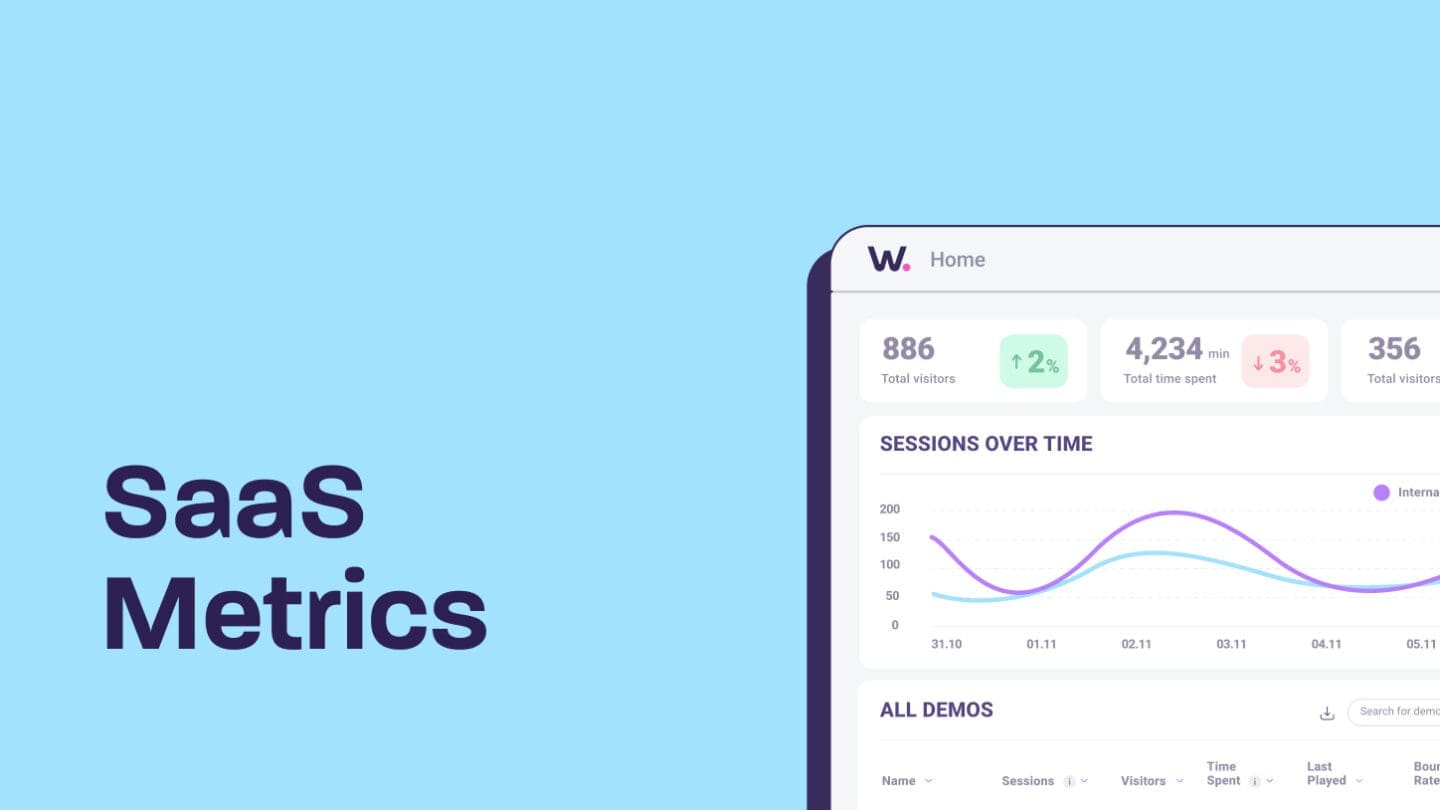If you’re thinking to yourself: how in the H-E-double hockey sticks are medics related to SaaS sales? Don’t worry.
We promise it’s not that kind of medic.
Which is probably for the best because I’m a content writer with no medical experience whatsoever.
So, which kind of MEDDIC are we talking about? The MEDDIC sales methodology!
This is an approach that’s all about qualifying a B2B lead as soon as possible.
While this part of the sales process is sometimes overlooked, any veteran sales pro will tell you how challenging it is to accurately qualify potential clients. And even after hours of research and calls, there’s a chance you’ll realize a lead is a bad fit.
So, join us as we break down everything you need to know about the MEDDIC sales methodology and how you can implement it into your current B2B SaaS sales strategy.
- What is lead qualification in SaaS sales?
- What is the MEDDIC sales process?
- What makes MEDDIC sales qualification different from other methodologies?
- Benefits of MEDDIC sales methodology
- How to apply the MEDDIC sales process to your SaaS sales strategy
- M—Metrics
- E—Economic Buyer
- D—Decision Criteria
- D—Decision Process
- I—Identify Pain
- C—Champion
- What are MEDDPICC and MEDDICC?
- P —Paperwork Process
- C—Competition
- The role of product demos when using MEDDIC sales methodology
What is lead qualification in SaaS sales?
But first, let’s go over the basics.
Lead qualification is the process of checking potential buyers to see if your product would be a good fit for them.
This part of the sales process is essential because it helps prevent you from wasting the prospect’s time. On top of this, it also ensures you’re spending your own time and resources wisely.
Because no one wants to spend time chasing a prospect who’s never going to sign on the dotted line.
What is the MEDDIC sales process?
Now, on to today’s headliner.
MEDDIC is a sales methodology that relies on a framework to qualify prospects and make sure the deal remains relevant throughout the sales process.
The technique was created by Dick Dunkel and Jack Napoli, who worked together at a software company called PTC.
Using this methodology, PTC increased its sales from $300 million to $1 billion in only four years.
WOAH. Not too shabby if we don’t say so ourselves.
So, what does MEDDIC stand for? Great question!
MEDDIC stands for—Metrics, Economic Buyer, Decision Criteria, Decision Process, Identifying Pain, and Champion.
What makes MEDDIC sales qualification different from other methodologies?
We are the first to admit that it’s hard to keep track of all the different sales methodologies out there. Gap Selling, SPIN Selling, Conceptual Selling, Sandler Selling—the list goes on and on.
So, what makes the MEDDIC sales technique stand out?
This methodology emphasizes extensive buyer qualification, which differentiates it from other sales approaches.
And because MEDDIC sales methodology is an easy-to-remember acronym, it gives reps a straightforward framework for gathering all the knowledge they need to qualify prospects. This, in turn, helps reps determine if it’s worth continuing the conversation with a particular prospect.
In essence, when you are better able to qualify prospects, your sales team can dedicate its resources towards more motivated buyers. And this will go a long way in helping you reach your targets.
Benefits of MEDDIC sales methodology
Because of its unique focus, there are many benefits to using MEDDIC sales methodology.
Here are just a few of them:
- Helps sales teams use resources more efficiently
- Enhances the accuracy of your sales forecasting
- Easy-to-learn and implement for sales teams
- Improves the efficiency of the sales process thanks to better qualification
- Acts as a shared language for your sales team to keep communications friction-free and consistent
These are not, by any means, all the benefits, but just some of the ways that sales teams can experience a boost when using this methodology.
How to apply the MEDDIC sales process to your SaaS sales strategy
Understanding the methodology on paper is one thing, but where do you even start when it comes to implementing MEDDIC into your SaaS sales approach?
We’re happy you asked!
To better understand how to apply MEDDIC sales methodology, we have to break down the acronym and how to apply it:
M—Metrics
First and foremost, you’ll need to find out what the customer hopes to gain from the solution.
The goals that you uncover in this phase should be metrics, or outcomes that can be measured and quantified. For example, maybe your prospect wants to increase their output or trim their production costs.
Understanding these metrics will allow you to highlight the economic benefits your product can deliver in a way that resonates with the prospect.
Here are a few questions that you can ask to help you learn more about the metrics that matter to your prospects:
- What goals have you set for your business?
- Which metrics do you need to improve to achieve efficiency?
- How do you measure success?
E—Economic Buyer
Who’s got the decision-making power?
That’s the key question you have to ask.
The economic buyer is the type of prospect that has the power to make the decision to finalize the deal and allocate the budget to your product.
It’s important to remember, though, that this person may not be your main point of contact during your discussions with the company.
So, it’s essential that you get in contact with this person ASAP. And if you aren’t able to get in touch with them, speak with your point of contact to try to understand the economic buyer’s motives, expectations, priorities, and their decision-making process so you can appeal directly to this.
There are a few questions that you can ask to uncover more about the economic buyer:
- Are you authorized to sign off on the purchase of a solution?
- Is anyone else involved when it comes to making a final decision?
D—Decision Criteria
Wouldn’t it be nice if each organization had the same requirements for making purchases?
It really would. However, that’s usually not the case.
(We really hate being the bubble bursters.)
Most of the time, a company’s decision criteria will vary. On top of this, prospects typically evaluate a few different solutions during the buying process, so they may be stacking your solution up against your competitors’ products and seeing how they compare.
But there are some common factors like budget, ease-of-use, integration process, and the onboarding process that will typically be weighed during decision-making.
By understanding more clearly what will go into the prospect’s decision, you can better tailor your messaging to meet their specific needs and criteria.
Here are a few questions we recommend asking at this point in the process:
- What is your criteria when making this decision?
- How are you calculating your ROI to determine if the product is worth it?
D—Decision Process
Next up, you’ll need to understand the decision process.
We know that decision criteria sounds pretty similar to the decision process. But there is a key difference.
While the decision criteria is what goes into the decision, the decision process focuses on how that decision is actually made and what follow-through is involved. The decision process includes who’s involved in making the decision, their timeline, and any other formal approval processes that the company has in place.
When you understand the decision process, you know exactly what has to happen on the prospect’s side for the deal to close. This means you’ll be better able to push the deal across the finish line.
To help you learn more about the decision process, here are some questions you can ask:
- What processes do you have to complete to make a financial commitment?
- What is the timeframe when it comes to making a final decision?
- What steps are needed to complete the paperwork?
- What is the procedure for legal review on your end?
I—Identify Pain
This stage of the methodology is all about identifying what pain points the prospect is trying to address and using that information in the next stages.
That’s what we at Walnut like to hear!
Clearly understanding the challenges your prospect is facing will help you better position your product as a solution.
So, you’ll need to get as specific as possible when it comes to drilling down and discovering the root of the problem.
Once you have uncovered the pain points your prospect is experiencing, you can personalize your B2B sales pitch and send them a personalized product demo that illustrates how your product may alleviate that problem.
Just like you collect metrics data concerning your prospect’s goals, you can also ask them for specifics regarding their pain points.
Here are just a few examples of questions that you can ask to help you do this:
- What challenges are you dealing with right now?
- What happens if you do not try to solve this problem?
- How do the pain points affect you both long-term and short-term?
C—Champion
We are the champions, my friends.
(Sorry, we just really like that song.)
Back to business now.
The last step of MEDDIC sales methodology is to find a champion, or someone on the inside that is rooting for you. This person is most likely the one that stands to benefit from your solution.
Consider them your wingman who will represent you when you’re selling the product and assist you in closing the transaction.
Your champion can also provide you with a general overview of the situation at the company with information you wouldn’t be able to discover on your own. This can be anything from who to contact and how, to facts about the company’s client base— knowledge you can use to hone a sales pitch.
They might even be able to arrange a meeting for you with the appropriate stakeholders.
Just remember to be careful about who you choose as your champion—their influence and respect at the company can impact the deal.
Here are some questions you’ll ask yourself at this point in the process:
- What does the champion have to gain?
- Does the champion have influence over the decision-makers?
- Can they effectively convey the value of your SaaS product to the involved parties (end-users and decision-makers)?
What are MEDDPICC and MEDDICC?
We’ve done a deep dive into the MEDDIC sales methodology.
But wait, there’s more! And by more, we mean more acronyms coming your way.
The original MEDDIC methodology has been adapted into two additional methodologies: MEDDPICC and MEDDICC. While the core fundamentals remain the same, the methodology has been adjusted to make it work in different settings.
So, what do the extra letters stand for?
P —Paperwork Process
This additional stage looks at the contracts which need to be implemented before the deal is finished. It seeks to get ahead of all the paperwork that may be required to seal the deal and avoid later friction.
C—Competition
The competition phase takes into account the other offers prospects may be considering. You are not the only game in town. And this means you need to understand your unique value position as well as your weaknesses.
The role of product demos when using MEDDIC sales methodology
If there’s one thing we hope you get from this article, it’s that in a (sales) world filled with acronyms, MEDDIC is worth remembering.
Using MEDDIC to qualify your prospects will help you make sure that you are focusing on the correct people and giving them everything they need to make a purchase decision.
But there’s a way to get even more out of this methodology.
How, you ask? By using interactive and personalized sales demos throughout the MEDDIC sales process.
When you use a demo experience platform (like Walnut), you can send tailor-made demos directly to prospects to give them a chance to try the product for themselves. You can then track how the prospect interacts with your demo to gain insights into their buying intent and interests.
And this can help you understand if the lead is worth chasing.
Let’s put it this way. When you add in engaging demos as part of the MEDDIC sales method, you’ll be giving yourself a leg up when it comes to qualifying leads and hitting your quota.
Ready to start killing the lead qualification game? Book a meeting with us now by clicking that “Get Started” button on the top of the screen.



